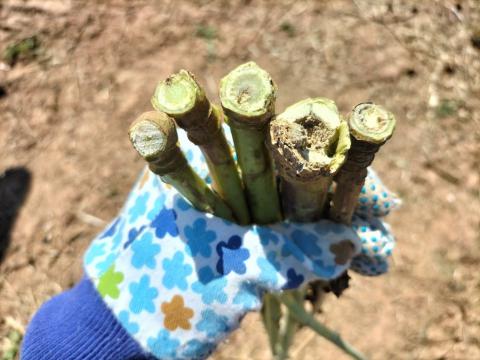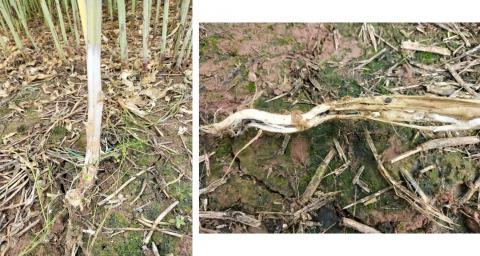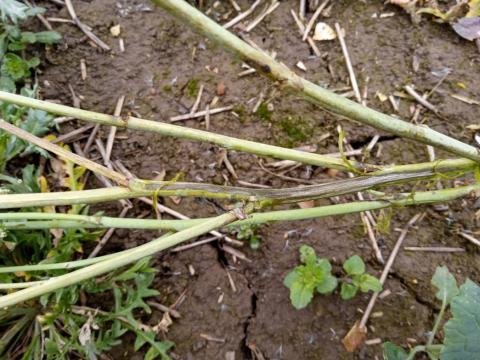Philip Walker
Oilseed Diseases Update

In Oilseed rape crops, the Light leaf spot symptoms are mainly being reported on the stems and symptoms are visible on the pods in susceptible varieties which can cause them to distort with resulting yield losses.
The signs of stem canker, caused by phoma leaf infections in the autumn, are visible in susceptible varieties. These are usually seen as sunken brown or necrotic lesions at the stem base (Figure 1). Enlarged lesions can girdle and weaken the stem, causing symptoms such as premature ripening, lodging and plant death. Phoma lesions higher up the stem are generally less damaging, but can cause premature ripening of lateral stems in severe cases.

Such symptoms can also be indicative of other diseases as sclerotinia, clubroot and verticillium stem stripe. Sclerotinia lesions have been seen on lateral and main stems in untreated trial plots in Wales and Herefordshire, most likely as a result of infection during the mid-flowering period. In a few cases, sclerotinia infection has been reported at the stem base where infection has occurred directly from sclerotia in the soil or from germinated apothecia at the soil surface (Figure 2). The first symptoms of verticillium stem stripe have now been seen in susceptible varieties. These become more obvious as the crop starts to mature and are evident as yellow or brown vertical lines running up the length of the stem. If there are individual plants or patches where verticillium is suspected, scrape the surface of the stem midway up its length and around its circumference. Avoid the stem base to prevent confusion with stem canker. If the tissue underneath is grey and runs in vertical lines, this may indicate early verticillium symptoms (Figure 3). Stem striping on the outside of the stem usually appears within a week of early symptoms being found. Further information on verticillium and variety ratings can be found via the link https://ahdb.org.uk/knowledge-library/verticillium-stem-stripe-in-oilseed-rape

ACTION
- Monitor crops for areas that are ripening prematurely and identify the cause as this may affect disease management strategies for future seasons e.g. require the use of disease resistant varieties.
- Monitor crops for sclerotinia infection to help inform future management strategies e.g. require the use of flowering fungicide sprays or extend rotations.
